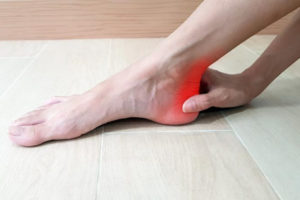 Tendinitis is also known as tendonitis it is the inflammation or irritation of a tendon — the thick fibrous cords that attach muscle to bone. The condition causes pain and tenderness just outside a joint. While tendinitis can occur in any of your tendons, it’s most common around your shoulders, elbows, wrists, knees, and heels.
Tendinitis is also known as tendonitis it is the inflammation or irritation of a tendon — the thick fibrous cords that attach muscle to bone. The condition causes pain and tenderness just outside a joint. While tendinitis can occur in any of your tendons, it’s most common around your shoulders, elbows, wrists, knees, and heels.
Symptoms and Causes
Symptoms usually include…
- Pain which worsens on movement
- A feeling that the tendon is crackling or grating as it moves
- Swelling, heat, and redness
- A lump may develop along the tendon
Some common names for various tendinitis are tennis elbow, golfers elbow, pitcher’s shoulder, swimmer’s should, and jumper’s knee. Most cases respond to self-care. if your signs persist and interfere with your daily routine for more than a few days call your doctor. Tendinitis is more likely to stem from the repetition of a particular movement over time. Usually, it is because your job or hobby involves repetitive motions which put stress on the tendons. Using proper techniques is important when performing repetitive sports or job-related activities. Risk factors for tendinitis include age, working a particular job, or participating in certain sports. As people get older their tendons become less flexible which makes them a perfect candidate for injury to the tendons. Symptoms may last from a few days to several weeks or months.
Diagnosis and Treatment
Usually, your doctor can diagnose tendonitis during the physical exam alone. Your doctor may order X-rays or other imaging tests if it’s necessary to rule out other conditions that may be causing your signs and symptoms. The underlying culprit in tendinitis is inflammation. Tendinosis, on the other hand, is a chronically damaged tendon with disorganized fibers and a hard, thickened, scarred, and rubbery appearance. It is important to make the distinction between the two because the ultimate treatment can be very different. That distinction is made by a very simple musculoskeletal ultrasound examination that can be performed in the doctor’s office. The ultrasound can easily detect the swelling and inflammation of tendinitis or the chronic degenerative changes of tendinosis.
- For Tendinosis – A physical therapy program to stretch the tendon and strengthen the surrounding muscles. If pain persists, your next step may be an injection of platelet-rich plasma (PRP) from your own blood to try to stimulate a healing response.
- For Tendinitis – Rest, avoid the repetitive motion that originally caused the pain. Short-term use of over-the-counter anti-inflammatories, such as ibuprofen or naproxen. A tennis elbow strap can be used for the elbow; there are various other types of braces and straps for patellar and Achilles tendinitis
Complications and Prevention
Serious complications of tendinitis include contractures (or tightening) of the tendon, scarring (called adhesions), muscle wasting, and disability. Without proper treatment, tendinitis can increase your risk of experiencing tendon rupture, which is a much more serious condition that may require surgery. If the tendon irritation persists a condition known as tendinosis may develop. This involves degenerative changes in the tendon, along with abnormal blood vessel growth.
Severe symptoms may require specialized treatment from a rheumatologist, an orthopedic surgeon, or a physical therapist. When properly treated, most tendinitis conditions don’t result in permanent joint damage or disability. To reduce your chances of developing tendinitis, Ease up on activities tathn plac excess I’ve stress o your tendons for prolonged . If one exercise or activity causes persistent pain try something else. Consider taking lessons or getting professional instruction when starting a new sport or using exercise equipment. If possible get an ergonomic assessment of your workplace. And condition your muscles for play, by strengthening the muscles you use in your sport, you help them better handle the physical demands of the game.
For persistent pain that is interfering with your daily activities, see a rheumatologist to make the correct diagnosis and begin the proper treatment.
We Treat Patients With Tendonitis
Tendonitis treatment typically follows a multifaceted approach centered on reducing inflammation and promoting healing of the affected tendon. The RICE protocol—rest, ice, compression, and elevation—forms the foundation of initial care, allowing the irritated tissue to recover while minimizing swelling. Over-the-counter anti-inflammatory medications like ibuprofen or naproxen can help manage pain and reduce inflammation, though they should be used as directed. Physical therapy plays a crucial role in recovery, incorporating specific stretching and strengthening exercises to restore function and prevent recurrence. For persistent cases, healthcare providers might recommend corticosteroid injections to provide temporary relief, though these are used judiciously due to potential side effects with repeated use. Alternative treatments gaining recognition include extracorporeal shock wave therapy, platelet-rich plasma injections, and therapeutic ultrasound, which can accelerate healing in chronic cases. Most importantly, prevention strategies—including proper warm-up before activities, ergonomic adjustments to work environments, and attention to technique during repetitive movements—remain essential for long-term tendon health once the acute phase has resolved.
> Learn More
Contact Us (859-331-3100) For More Information to Request an Appointment
—
 About Tristate Arthritis and Rheumatology
About Tristate Arthritis and Rheumatology
Tristate Arthritis and Rheumatology is first and largest Rheumatology practice in the Northern Kentucky area. Founded by Dr. Arthur Kunath in 1986, our rheumatology practice now consists of six doctors who are board certified in both Internal Medicine and Rheumatology and a Physician Assistant. Patients see one doctor (except in emergencies), thereby assuring continuity of care and an individualized doctor-patient atmosphere giving the physician the ability to establish personalized and detailed relationships. Our doctors have received numerous awards, including being listed as “Top Doctors” in Cincinnati Magazine, receiving the Patient’s Choice Award, the Most Compassionate Doctor Award, and the American College of Rheumatology’s “My Doc Rocks” award.
>> Learn More


